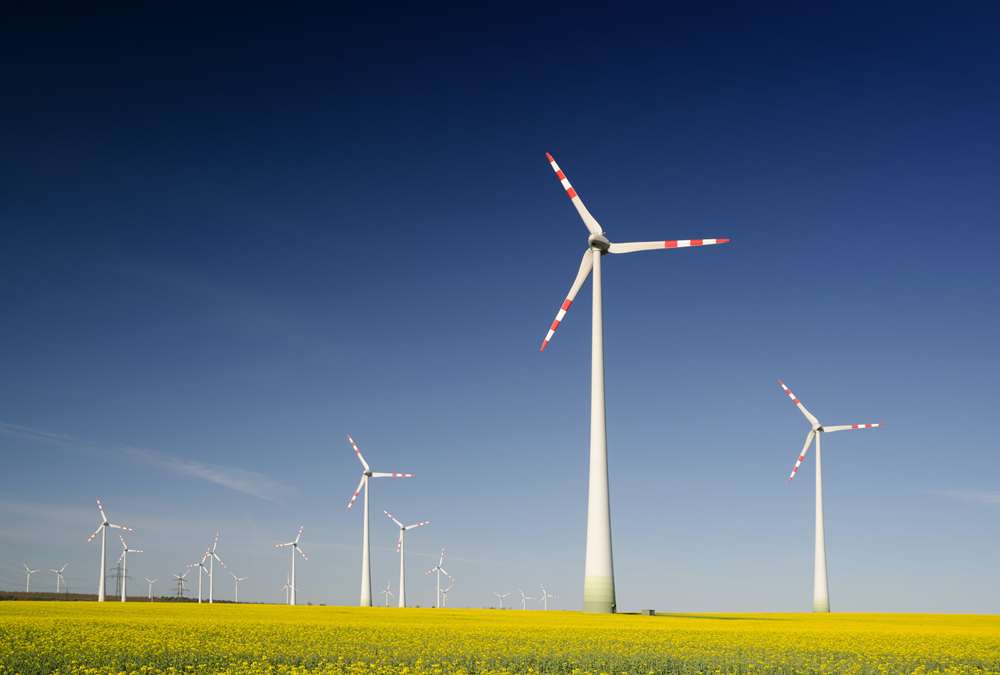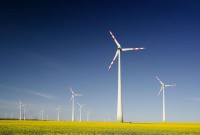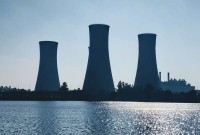- Home
- Business Processes
- Industry Knowledge
- Aerospace Industry
- Automotive Industry
- Banking Domain
- BFSI Industry
- Consumer/ FMCG Industry
- Chemicals Industry
- Engineering & Construction
- Energy Industry
- Education Domain
- Finance Domain
- Hospitality Domain
- Healthcare Industry
- Insurance Domain
- Retail Industry
- Travel and Tourism Domain
- Telecom Industry
- Leadership Skills
- eLearning
- Home
- Industry Knowledge
- Energy Industry
- The Renewable Energy Industry
The Renewable Energy Industry
Most of the energy we use today is being obtained from coal and petroleum. There are some sources of energy, which can be used repeatedly without exhausting them, such as, energy from the sun, energy from a water-fall, wind energy, tidal energy. This industry comprises of alternative energy and sustainable energy companies, including those involved in hydroelectric power, wind power, and solar power generation, and the manufacture, distribution, and sale of alternative fuels.
Renewable V/s Non-Renewable Resources of Energy
Most of the energy we use today is being obtained from coal and petroleum. We also have nuclear power plants. But these energy sources are limited as only finite quantities of coal; petroleum and gas exist underground or in oceans. The present reserves of coal and petroleum, if consumed at the current rate, maybe exhausted after a certain period. Nature would take thousands of years to produce them. Thus, as far as human lifetimes are concerned, once exhausted, they will not be available for use. This is why these are called non- renewable sources of energy.
On the other hand, there are some sources of energy, which can be used repeatedly without exhausting them, such as, energy from the sun, energy from a water-fall, wind energy, tidal energy. Biomass energy and energy from plants can be obtained by growing plants. Hence, we call such resources of energy as renewable resources, i.e., those that are continuously restored by nature. The challenge today is how to tap these energy resources efficiently and economically.
Renewable energy and farming are a winning combination. Solar, wind, and biomass energy can be harvested forever, providing farmers with a long-term source of energy and income. Renewable energy can be used on the farm to replace other fuels. It can also be sold as a “cash crop”.
We now discuss each of these sources.
Solar Energy
The energy from the sun is responsible for sustaining life on the earth. It is a renewable source of energy, non-polluting, available almost everywhere on earth, and is affordable. The sun, which is the main source of all forms of energy on the earth, can now be directly tapped to meet the energy requirements for different sectors including agriculture. Solar energy is especially beneficial for those countries located between the tropic of Cancer and Capricorn because of the availability of high-intensity solar radiation for more days in these geographical areas i.e. more than 300 days a year.
In simplistic terms, the light energy from the sun is converted to electrical energy through a specially manufactured device called Solar PV modules. The term “Solar Energy” refers to radiation energy i.e. light and heat emitted from the sun. Some amount of this energy is lost before it reaches the earth's surface, as it travels over 93 million miles km from the sun through various layers of the atmosphere.
Advantages of Solar Energy
- Clean energy source
- No fuel cost incurred as it uses sunlight as input,
- The power to drive the motor & pump can be generated as long as solar radiation is available.
Wind Energy
Wind is a renewable resource and, it is always available. Unlike the non-renewable resources, it does not get depleted. Wind Energy is one of the very good renewable energy sources. Further, a big advantage is that it does not pollute the environment. Therefore, it is environment friendly. In order to move into clean sources of power, wind power can be a major contributor. This will help to move into indigenous sources of power and also augment the power needs of lots of people, who are yet to have access to electricity.
Advantages of Wind Energy
1. Wind energy is said to be one of the cleanest energy sources as it does not cause pollution to our environment
2. It uses the renewable resource, wind and this resource is available in plenty
3. Another advantage of Wind power is that this industry, that is, the wind power industry will provide skilled jobs to many
BioEnergy
Energy from biomass is broadly termed as bio-energy. Bio-energy is renewable and produced from biological sources. The food we eat has bio-energy; the milk we drink is bio-energy. Besides the main food crops, there are energy plantation crops, which are used for extracting energy in the form of solid and liquid fuels. Ethanol, a partial substitute for petrol is being extracted from crops like sweet sorghum and cassava. Today we are talking of bio-diesel that can be produced from crops like jatropha.
Large-scale production of bioenergy would initially require the use of agricultural and forest residues, and eventually dedicated energy crop plantations. The cost-effectiveness in any particular investment situation is likely to depend on site-specific opportunities. The long-term effects of bio-energy exploitation, through dedicated plantations, on soil quality, fertility, and biodiversity may be adverse.
Therefore, a balance needs to be struck between the advantages and disadvantages of bio-energy, and this is reflected in both optimistic and pessimistic views regarding the uncertainties about how bio-energy systems can provide cost-effective local and global benefits. These uncertainties have restricted the development and commercialization of modern biomass technologies.
Biodiesel Fuel
The United States depends heavily on imported oil to fuel its transportation infrastructure. The use of alternative fuel derived from plant oils was examined by researchers in the mid-1970s to determine if internal combustion engines could be fueled from sources other than petroleum. The initial research on pure vegetable oils as a replacement for petroleum diesel fuel was met with mostly negative results. Researchers determined that transesterification of these plant- and animal-derived oils reduced the viscosity of the oil without any other significant changes to the oil. Since the new fuel was bio-derived and was used to fuel a diesel engine, the name ‘‘biodiesel’’ was selected to refer to the new fuel. Most economists are of the opinion that biodiesel has the capability to replace about 2 to 5% of the diesel fuel used for transportation in the United States. Although this may seem small in comparison to the volume of diesel fuel used, this would indicate that we would need to produce roughly 6 billion gallons of biodiesel each year. However, Brazil has become a major exporter in the soybean market.
Bio-Mass Fuel
Biomass has been used to meet the needs of civilization since prehistory. Several biomass chemical products can be traced to a time when neither the chemical mechanistic transformation process nor the chemical identity of the product was understood. These early products include chemicals still widely used, such as ethanol and acetic acid. A more scientific understanding of chemistry in the 19th century led to the use of biomass as a feedstock for chemical processes. However, in the 20th century, the more easily processed and readily available petroleum eventually changed the emphasis of chemical process development from carbohydrate feedstock to hydrocarbon feedstock. Through major investments by industry and government, utilization of petroleum as a chemical production feedstock has been developed to a high level and provides a wide array of materials and products. Now, the expansion of synthetic chemical products from petroleum and an improved understanding of chemistry in the mid- 800s was ethanol identified and its use expanded for solvent applications and as a fuel.
Related Links
You May Also Like
-
This is the traditional industry based on the collection and distribution of firewood, the use of which, for cooking and heating, is particularly common in poorer countries. People have needed energy in some form for their everyday lives for hundreds of years. Primitive man (about 1 million years B.C.) used fire to cook food and over the period of human development. The energy industry was probably born the day when our ancient ancestors first discovered that they could keep themselves warm and cook food with fire.
-
Most of the energy we use today is being obtained from coal and petroleum. There are some sources of energy, which can be used repeatedly without exhausting them, such as, energy from the sun, energy from a water-fall, wind energy, tidal energy. This industry comprises of alternative energy and sustainable energy companies, including those involved in hydroelectric power, wind power, and solar power generation, and the manufacture, distribution, and sale of alternative fuels.
-
Nuclear power is the use of sustained nuclear fission to generate heat and electricity. Nuclear power plants provide about 6% of the world's energy and 13–14% of the world's electricity, with the U.S., France, and Japan together accounting for about 50% of nuclear-generated electricity. In 2007, the IAEA reported there were 439 nuclear power reactors in operation in the world, operating in 31 countries.
-
Energy is essential to life and the key to human progress. Energy is the common link between the living and non-living realms of the universe, and thus provides an organizing intellectual theme for diverse disciplines. Energy growth is directly linked to well-being and prosperity across the globe. Meeting the growing demand for energy in a safe and environmentally responsible manner is a key challenge.
-
The energy is comprised of companies involved in the exploration and development of oil or gas reserves, drilling, and refining and integrated power companies working on renewable and coal energy. This industry locates fuel resources, processes them, and finally involved in the production and sale of energy. Access to affordable energy is fundamental to human development, and economic growth as without electricity and power, human opportunities are significantly constrained.
-
The modern electric power industry covers the generation, transmission, distribution, and sale of electric power to the general public and industry. The commercial distribution of electric power started in 1882 when electricity was produced for electric lighting. In the 1880s and 1890s, growing economic and safety concerns lead to the regulation of the industry. What was once an expensive novelty limited to the most densely populated areas, reliable and economical electric power has become an essential aspect for normal operation of all elements of developed economies!
-
The energy industry is going through the biggest transformation in history. The impact of energy production and consumption on the environment is varied and mankind has started understanding the importance of improving energy efficiency and ensuring energy security for all. The current trend is to explore sustainable energy options that can provide power to future generations.
-
The history of human culture can be viewed as the progressive development of new energy sources. Developments in the energy industry have resulted in unparalleled transformations of society. It is because of the availability of energy sources that humans have been able to increase comfort, longevity, and affluence, as well as their population apart from unprecedented growth. Each energy fuel alternative has also impacted different combinations of economic, political, technological, social, and environmental attributes.
-
These industries include petroleum industries (oil companies, petroleum refiners, fuel transport and end-user sales at gas stations) coal industries (extraction and processing), and the natural gas industries (natural gas extraction, and coal gas manufacture, as well as distribution and sales). Most of the energy we use today is being obtained from coal and petroleum. We also have nuclear power plants. But these energy sources are limited as only finite quantities of coal; petroleum and gas exist underground or in oceans.
Explore Our Free Training Articles or
Sign Up to Start With Our eLearning Courses

About Us
Learning
© 2023 TechnoFunc, All Rights Reserved









